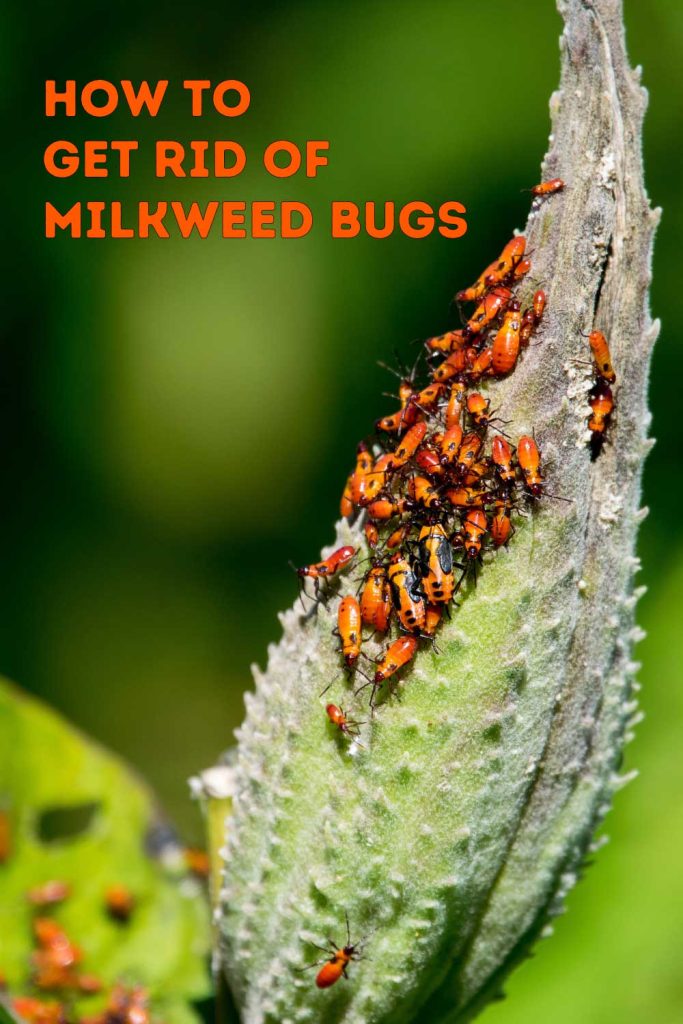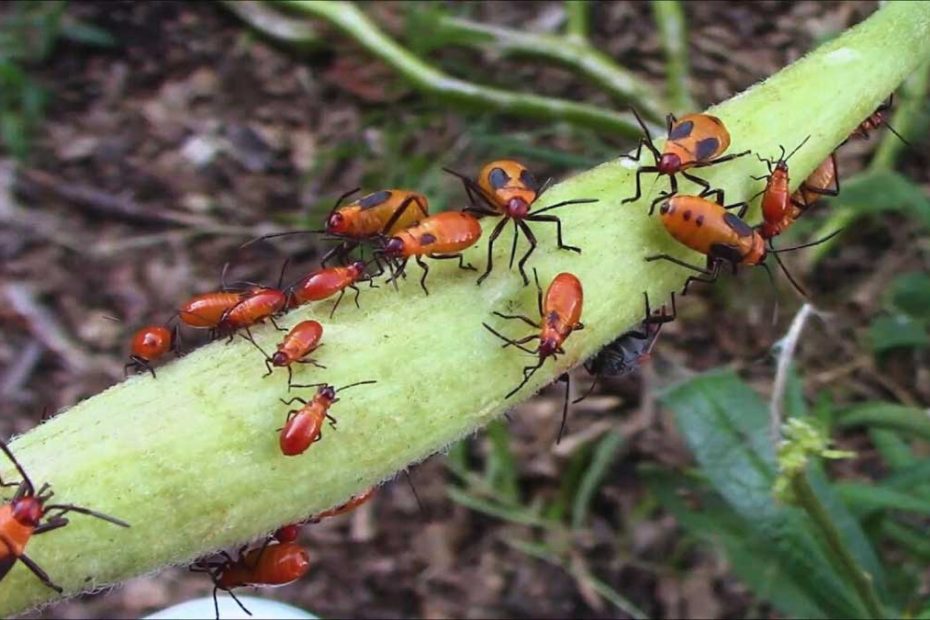Milkweed bugs might seem harmless at first, but they can quickly become a nuisance in your garden. These brightly colored insects feed on milkweed plants, potentially harming the very habitat you’re trying to nurture for monarch butterflies. If you’ve noticed an increasing number of these pests, it’s time to take action.
Getting rid of milkweed bugs isn’t as daunting as it sounds. With a few practical steps, you can manage their population and protect your plants. Let’s explore some effective strategies to keep your garden thriving and free from these pesky invaders.
Key Takeaways
- Identification: Milkweed bugs are easily identified by their bright orange-red and black coloration, elongated bodies, and partial wings. They are commonly found in gardens and wild areas with milkweed plants.
- Prevention: Maintain healthy milkweed plants through regular inspections, pruning, and proper watering. Encourage natural predators like spiders, beetles, and birds to help control the bug population.
- Organic Control: Use homemade sprays (soap and water, garlic and chili, neem oil) and introduce beneficial insects such as ladybugs, lacewings, and predatory wasps to naturally reduce milkweed bug numbers.
- Chemical Control: For severe infestations, select appropriate insecticides such as pyrethroids, neonicotinoids, or insecticidal soaps, applying them carefully to avoid harming beneficial insects and the environment.
- Long-term Management: Implement regular monitoring and integrated pest management (IPM) strategies, combining cultural, biological, mechanical, and chemical methods to maintain a balanced and healthy garden ecosystem.

Identifying Milkweed Bugs
Recognizing milkweed bugs in your garden is the first step in managing them effectively. These pests can impact milkweed plants vital for monarch butterflies, so timely identification is crucial.
Physical Characteristics
Identify milkweed bugs by their distinct appearance:
- Size: Adult milkweed bugs typically measure about 0.5 inches (12 mm) in length.
- Color: They have striking orange-red and black coloration, making them easy to spot.
- Body Shape: Their bodies are elongated with a prominent black band across their midsection.
- Wings: These bugs possess partial wings, allowing for limited flight.
Common Habitats
Milkweed bugs prefer environments where milkweed plants thrive:
- Gardens: Often found on milkweed plants in home gardens.
- Wild Areas: Common in fields, meadows, and along roadsides where wild milkweed grows.
- Protected Areas: Seen in conservation areas that support monarch butterfly populations.
By understanding these characteristics and habitats, you can quickly identify and take action to control milkweed bugs in your garden.
Prevention Methods
Maintain a healthy garden environment to get rid of milkweed bugs. Prevention focuses on both plant care and leveraging natural controls.
Proper Milkweed Plant Maintenance
To ensure your milkweed plants remain healthy and resilient to bug infestations, regular care is essential.
Key Maintenance Practices:
- Regular Inspection: Check plants weekly for signs of milkweed bugs. Early detection can prevent larger infestations.
- Pruning: Trim dead or dying plant parts. This removes potential breeding grounds for bugs.
- Watering: Water milkweed plants adequately, avoiding both under-watering and over-watering.
Example:
- Deadheading Flowers: Remove spent blooms to encourage new growth and deter pests.
Natural Predators
Use natural predators to manage milkweed bug populations effectively.
- Spiders: Common garden spiders can help control milkweed bug numbers.
- Predatory Beetles: Beetles like ladybugs prey on milkweed bugs’ eggs and nymphs.
- Birds: Encourage insectivorous birds by providing habitats.
Example:
- Attract Birds: Install bird feeders and baths to draw bug-eating birds to your garden.
These prevention methods, focused on plant maintenance and natural predators, can help sustain a healthy garden and reduce milkweed bug populations.
Organic Control Solutions
Using organic control solutions offers an effective, environmentally friendly approach to rid your garden of milkweed bugs. These methods focus on maintaining the ecological balance in your garden while controlling pests.
Homemade Sprays
Homemade sprays provide a safe, cost-effective way to address milkweed bugs. Here’s how you can create and use them:
- Soap and Water Spray:
- Ingredients: 1 teaspoon of dish soap, 1 liter of water.
- Instructions: Mix the soap and water well. Spray directly on milkweed bugs and affected plant parts. The soap solution disrupts the bug’s cell membranes, leading to dehydration.
- Garlic and Chili Spray:
- Ingredients: 1 garlic bulb, 1 tablespoon of chili powder, 1 liter of water.
- Instructions: Mince the garlic, add the chili powder, and mix with water. Let it sit overnight. Strain and spray the mixture on the plants. This concoction repels milkweed bugs and other pests due to its pungent odor and spicy nature.
- Neem Oil Spray:
- Ingredients: 2 teaspoons of neem oil, 1 teaspoon of mild liquid soap, 1 liter of water.
- Instructions: Combine the neem oil and soap with water. Spray on plants and insects. Neem oil works by interfering with the insect’s hormonal systems, making it harder for them to grow and lay eggs.
Beneficial Insects
Introducing beneficial insects into your garden provides natural predation to reduce milkweed bug populations. These insects form an integral part of organic control solutions.
- Ladybugs:
- Description: Small beetles with bright red or orange bodies and black spots.
- Role: Ladybugs consume aphids, milkweed bugs, and other soft-bodied pests. They’re highly effective in reducing pest populations organically.
- Lacewings:
- Description: Green or brown insects with delicate, lace-like wings.
- Role: Lacewings larvae, known as aphid lions, are voracious predators of milkweed bugs, aphids, and other pests.
- Predatory Wasps:
- Description: Small to medium-sized wasps that prey on other insects.
- Role: Predatory wasps attack and consume milkweed bugs, reducing their numbers. They also target other garden pests, maintaining overall garden health.
By using these organic control solutions, you effectively manage milkweed bug populations without harming the environment. Consider integrating these methods for a balanced, healthy garden.
Chemical Control Options
Chemical control options offer a reliable method for managing severe milkweed bug infestations. While effective, these solutions require careful selection and application to protect your garden’s health and the surrounding environment.
Selecting Insecticides
Different insecticides target specific pests, including milkweed bugs. When choosing an insecticide, consider the following options:
- Pyrethroids: These synthetic chemicals, derived from chrysanthemum flowers, disrupt the nervous systems of insects, leading to their death. Examples include permethrin and cypermethrin.
- Neonicotinoids: Resembling nicotine in structure, neonicotinoids like imidacloprid act on the nervous system, causing paralysis and death in pests.
- Insecticidal Soaps: Made from potassium salts of fatty acids, these soaps penetrate and disrupt the insect’s cell membranes. They are suitable for direct application on milkweed bugs.
- Systemic Insecticides: These chemicals, absorbed by plants, protect from within. When milkweed bugs feed on treated plants, they ingest the poison. Examples include acephate and dinotefuran.
Application Tips
Proper application of insecticides ensures effectiveness and minimizes harm to beneficial insects and the environment. Follow these tips:
- Timing: Apply insecticides early in the morning or late in the evening to reduce impact on pollinators like bees.
- Coverage: Ensure thorough coverage of the milkweed plant, focusing on areas where milkweed bugs are concentrated, such as the undersides of leaves.
- Resistance Management: Rotate insecticides with different modes of action to prevent the development of resistant milkweed bug populations.
- Safety Precautions: Wear protective clothing, including gloves and a mask, while handling and applying insecticides. Follow the manufacturer’s instructions to minimize the risk of exposure.
By selecting the right insecticides and applying them effectively, you can manage milkweed bug infestations while maintaining a healthy garden ecosystem.
Long-term Management Strategies
Effective long-term management of milkweed bugs involves consistent practices and integrated approaches. By implementing regular monitoring and integrated pest management (IPM), you can maintain a healthy garden.
Regular Monitoring
Consistently monitoring your garden helps in the early detection of milkweed bugs. Immediate action prevents large infestations.
Key Practices:
- Frequent Inspections: Check milkweed plants, particularly during the growing season.
- Physical Examination: Look for orange-red and black bugs, eggs, and larvae on the undersides of leaves.
- Capture and Record Data: Document the number of sightings to track bug populations over time.
Integrated Pest Management
Integrated pest management combines various control methods to keep milkweed bug populations in check while minimizing environmental impact.
- Cultural Control: Maintain garden hygiene by removing plant debris, practicing crop rotation, and ensuring proper spacing.
- Biological Control: Introduce natural predators such as ladybugs, lacewings, and predatory beetles.
- Mechanical Control: Handpick visible bugs or use a handheld vacuum for removal.
- Chemical Control: Apply insecticidal soaps or neem oil sprays as a last resort, adhering to safety guidelines.
Regular monitoring and integrated pest management promote a balanced garden ecosystem while effectively controlling milkweed bugs.
Conclusion
Effectively managing milkweed bugs in your garden is entirely possible with the right approach. By accurately identifying these pests and understanding their habitats, you can take proactive steps to keep their populations in check. Regular garden maintenance and the use of natural predators offer sustainable prevention methods.
Organic solutions, like homemade sprays and beneficial insects, provide an eco-friendly way to control milkweed bugs without harming your garden’s ecosystem. For more severe infestations, carefully selected chemical controls can be effective when used properly.
Implementing long-term strategies and integrated pest management (IPM) ensures ongoing control and a balanced garden environment. By staying vigilant and combining various methods, you can protect your milkweed plants and support the vital monarch butterfly population.
Frequently Asked Questions
What are milkweed bugs?
Milkweed bugs are small insects about 0.5 inches long with distinctive orange-red and black coloring and an elongated body shape. They are commonly found on milkweed plants and can become nuisances in gardens.
Why are milkweed bugs a problem for gardens?
Milkweed bugs can damage milkweed plants by sucking sap, which affects plant health. Healthy milkweed is essential for supporting monarch butterflies, making managing these bugs important for balanced ecosystems.
How can I identify milkweed bugs in my garden?
Look for small insects about 0.5 inches long, with striking orange-red and black colors, elongated bodies, and partial wings. They are usually found on milkweed plants in gardens, fields, and meadows.
What are some effective prevention methods for milkweed bugs?
Maintain garden health by inspecting plants regularly, pruning dead or dying parts, and using proper watering techniques. These practices help deter milkweed bugs from establishing in your garden.
Are there natural predators for milkweed bugs?
Yes, common garden spiders, predatory beetles like ladybugs, and insectivorous birds can help control milkweed bug populations naturally.
What organic solutions can I use to control milkweed bugs?
Use homemade sprays like soap and water, garlic and chili, or neem oil. Introducing beneficial insects such as ladybugs, lacewings, and predatory wasps is also effective.
When should I consider chemical control for milkweed bugs?
Chemical control should be considered for severe infestations. Options include pyrethroids, neonicotinoids, insecticidal soaps, and systemic insecticides, used according to guidelines and safety precautions.
What are some tips for applying insecticides effectively?
Ensure proper application timing, thorough coverage, manage resistance by rotating insecticides, and follow all safety precautions to minimize environmental impact.
What long-term strategies can I implement to manage milkweed bugs?
Implement consistent practices like regular monitoring and integrated pest management (IPM). Combine cultural, biological, mechanical, and chemical controls to maintain a balanced garden ecosystem.
How does integrated pest management (IPM) help control milkweed bugs?
IPM combines various control methods to minimize environmental impact while effectively managing pest populations, promoting long-term, sustainable garden health.
